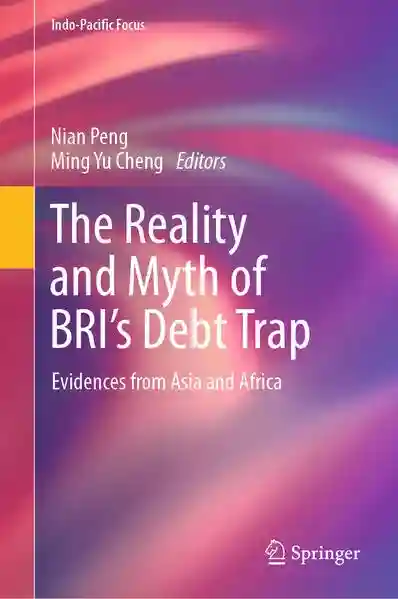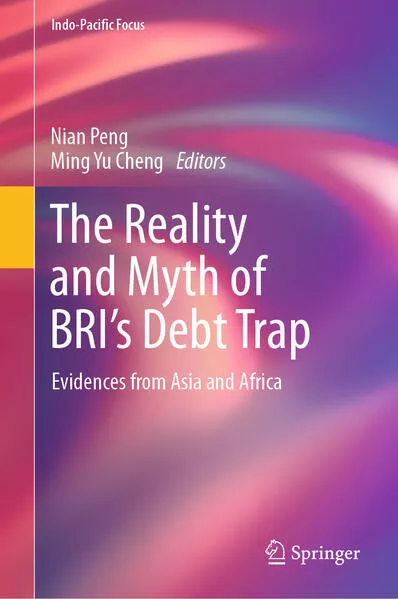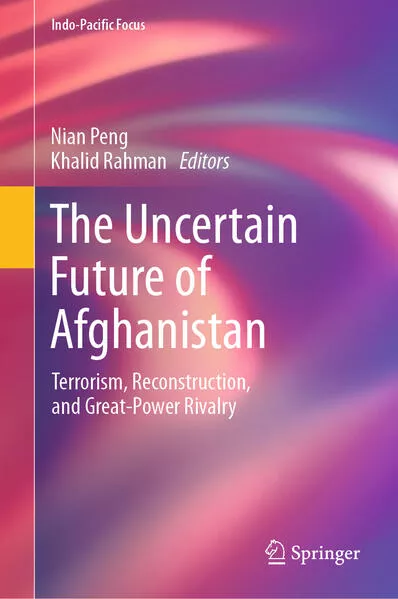Chronologie aller Bände (1 - 2)

Die Reihenfolge beginnt mit dem Buch "The Reality and Myth of BRI’s Debt Trap". Wer alle Bücher der Reihe nach lesen möchte, sollte mit diesem Band von Nian Peng beginnen. Der zweite Teil der Reihe "The Reality and Myth of BRI’s Debt Trap" ist am 17.04.2024 erschienen. Die Reihe umfasst derzeit 2 Bände. Der neueste Band trägt den Titel "The Reality and Myth of BRI’s Debt Trap".
- Anzahl der Bewertungen für die gesamte Reihe: 0
- Ø Bewertung der Reihe: 0
- Start der Reihe: 17.04.2024
- Neueste Folge: 19.04.2025
- Autor: Peng, Nian
- Anzahl Bewertungen: 0
- Ø Bewertung:
- Medium: Buch
- Veröffentlicht: 18.04.2024
- Genre: Politik
The Reality and Myth of BRI’s Debt Trap
This edited book aims to present a well-balanced view on the heated debate about BRI’s “debt trap” controversy within the route states by presenting compelling evidence from Asian and African countries. It is contributed by the university scholars, think tank experts, and governmental officials from the concerned parties such as China, USA, South/Southeast Asia, and Africa to discuss this new topic from their perspectives. It not only examines the origins and changes in external debt among the BRI route states before and after the launch of the BRI, but also analyzes the outcomes stemming from BRI projects. The book covers 12 chapters, in which the first chapter briefly introduces the aims and scope of this book. The following 2 chapters look at Chinese and Indian perspectives on the “debt trap”, respectively. The next 9 chapters examine the debt issue and BRI projects in Southeast Asian, South Asian, and African states, which mainly involve Myanmar, Cambodia, Laos, the Philippines, Malaysia, Indonesia, Bangladesh, Nepal, and Nigeria, and give some useful policy suggestions to reduce the debt burden and promote the socioeconomic development in these countries.
- Autor: Peng, Nian
- Anzahl Bewertungen: 0
- Ø Bewertung:
- Medium: Buch
- Veröffentlicht: 14.06.2024
- Genre: Politik
The Uncertain Future of Afghanistan
This edited book aims to analyze the domestic politics and foreign relations of the country after the Taliban regained power in August 2021. It touched upon the key issues affecting the Taliban regime, such as peace talks, terrorism threats, BRI cooperation, and the policies of the great powers and neighboring countries toward the new regime in Afghanistan. It makes a significant contribution by incorporating various viewpoints from government officials, university scholars, and think tank experts from China, Japan, and South Asian states. The broad approach and extensive coverage of all relevant countries make this book a valuable resource for more than just a specific academic community. It appeals to a diverse readership, including academics, policymakers, journalists, and general readers.
The main content of the book is divided into ten chapters, in which the first chapter briefly introduces the aims and scope of this book. The following 3 chapters look into the domestic politics in Afghanistan. These mainly include the Afghan peace negotiations, the challenge of the Taliban regime, and the security threats and regional response under the Taliban rule in Afghanistan. The next 6 chapters examine US's Afghan policy, China-Afghanistan relations, and Russia, India, Pakistan, Japan’s engagement with Afghanistan.

